Impact of Demand Side Response on a Commercial Retail Refrigeration System
Abstract
1. Introduction
2. The Extent of the Challenge
3. Refrigeration System Description and Testing Procedure
3.1. Impact of DSR on the Temperature Variation of the Refrigeration Cases
3.2. Impact of DSR on Power Consumption
- High voltage 11 kV power source with resistive-inductive characteristics and 50 Hz supply frequency. The generator is set to always control the output active power and reactive power.
- High voltage 11 kV feeder cable: the distance from the HV distribution substation to the local stepdown transformer is approximately 3 km.
- Step-down transformer (type Dyn11), where the low voltage at the secondary winding leads the high voltage at the primary winding by 30 degrees.
- Low voltage 433 V feeder cable, the distance from the step down transformed to the site main incomer is approximately 30 m.
- The refrigeration load is represented by a constant resistive-inductive base-load, while the inrush current is generated by a variable resistive-inductive load (i.e., inrush load), with floating Y connections (which unbalance the three phases of the power supply system).
4. Conclusions
Acknowledgments
Author Contributions
Conflicts of Interest
Appendix A
| Case Name | Case Type | Set Point | Differential | Valve Type | Defrost Termination |
|---|---|---|---|---|---|
| HT case 01 | Diary case with doors | 1 °C | 2 °C | AKV10 | 30 min/8 °C |
| HT case 02 | 1 °C | ||||
| HT case 03 | Meat case with doors | −2 °C | |||
| HT case 04 | −2 °C | ||||
| HT case 05 | −2 °C | ||||
| HT case 06 | Produce case with air curtain | 0 °C | |||
| HT case 07 | 0 °C | ||||
| HT case 08 | 0 °C | ||||
| HT case 09 | Dairy case with air curtain | −2 °C | |||
| HT case 10 | −2 °C | ||||
| HT case 11 | −2 °C | ||||
| HT case 12 | Meat case with air curtain | −2 °C | |||
| HT case 13 | −2 °C | ||||
| LT case 01 | Freezer | −23 °C | 2 °C | TEX | 30 min/3 °C |
| LT case 02 | Freezer | −23 °C |
| Rating | Power Source | High Voltage Feeder | Step Down Transformer | Low Voltage Feeder |
|---|---|---|---|---|
| Voltage | 11 kV | - | 11 kV/433 V | 433 V |
| Current | 39.4 A | - | 26.24 A/666.7 A | - |
| Power Factor | 0.98 * | - | 0.98 * | - |
| Apparent Power | 750 kVA * | - | 500 kVA | - |
| Active Power | 736 kW | - | 490 kW | - |
| Reactive Power | 149.3 kVAR | - | 99.5 kVAR | - |
| 3-phase Self-Impedance | 1 ohm, 1 mH | 0.1153 Ohm/km, 1.048 mH/km | - | - |
| 3-phase Mutual-Impedance | - | 0.4130 Ohm/km, 3.321 mH/km | - | 0.4130 Ohm/km, 3.321 mH/km |
| 3-phase Primary Winding Impedance | - | - | 0.024485 Ohm, 1.9244 mH | - |
| 3-phase Secondary Winding Impedance | - | - | 6.1714 × 10−5 Ohm, 4.8504 × 10−6 H | - |
| 3-Phase Magnetization Impedance | - | - | 4534.3 Ohm, 12.028 H | - |
References
- Armstrong, R.C.; Wolfram, C.; de Jong, K.P.; Gross, R.; Lewis, N.S.; Boardman, B.; Ragauskas, A.J.; Ehrhardt-Martinez, K.; Crabtree, G.; Ramana, M.V. The frontiers of energy. Nat. Energy 2016, 1. [Google Scholar] [CrossRef]
- Tan, X.; Li, Q.; Wang, H. Advances and trends of energy storage technology in Microgrid. Int. JEPE 2013, 44, 179–191. [Google Scholar] [CrossRef]
- Elvi Group. EPS partners with AutoGrid on software for energy storage, acquires Elvi Energy. Fuel Cells Bull. 2016, 2016, 9–10. [Google Scholar]
- Kamel, F.; Marwan, M. Demand-side response smart grid technique for optimized energy use. In Innovation in Power, Control and Optimization: Emerging Energy Technologies: Emerging Energy Technologies; Vasant, P., Barsoum, N., Webb, J., Eds.; Engineering Science Reference (IGI Global): Hershey, PA, USA, 2011; pp. 137–163. [Google Scholar]
- Proffitt, E. Profiting from Demand Side Response. Power Responsive, the National Grid in Association with the Major Energy Users’ Council. 2016. Available online: http://www.powerresponsive.com/media/1140/ng_meuc-dsr-book.pdf (accessed on 1 September 2017).
- Grünewald, P.; Torriti, J. Demand response from the non-domestic sector: Early UK experiences and future opportunities. Energy Policy 2013, 61, 423–429. [Google Scholar] [CrossRef]
- Granell, R.; Axon, C.J.; Wallom, D.C.; Layberry, R.L. Power-use profile analysis of non-domestic consumers for electricity tariff switching. Energy Effic. 2016, 9, 825–841. [Google Scholar] [CrossRef]
- Teng, F.; Aunedi, M.; Pudjianto, D.; Strbac, G. Benefits of demand-side response in providing frequency response service in the future GB power system. Front. Energy Res. 2015, 3, 36. [Google Scholar] [CrossRef]
- Cheng, M.; Wu, J.; Galsworthy, S.J.; Gargov, N.; Hung, W.H.; Zhou, Y. Performance of industrial melting pots in the provision of dynamic frequency response in the Great Britain power system. Appl. Energy 2017, 201, 245–256. [Google Scholar] [CrossRef]
- Beil, I.; Hiskens, I.; Backhaus, S. Frequency regulation from commercial building HVAC demand response. Proc. IEEE 2016, 104, 745–757. [Google Scholar] [CrossRef]
- Qadrdan, M.; Cheng, M.; Wu, J.; Jenkins, N. Benefits of demand-side response in combined gas and electricity networks. Appl. Energy 2017, 192, 360–369. [Google Scholar] [CrossRef]
- Tassou, S.A.; Kolokotroni, M.; Gowreesunker, B.; Stojceska, V.; Azapagic, A.; Fryer, P.; Bakalis, S. Energy demand and reduction opportunities in the UK food chain. Proc. Inst. Civ. Eng.-Energy 2014, 167, 162–170. [Google Scholar] [CrossRef]
- Buzelin, L.O.S.; Amico, S.C.; Vargas, J.V.C.; Parise, J.A.R. Experimental development of an intelligent refrigeration system. Int. J. Refrig. 2005, 28, 165–175. [Google Scholar] [CrossRef]
- Conte, F.; Massucco, S.; Silvestro, F.; Ciapessoni, E.; Cirio, D. Stochastic modelling of aggregated thermal loads for impact analysis of demand side frequency regulation in the case of Sardinia in 2020. Int. JEPE 2017, 93, 291–307. [Google Scholar] [CrossRef]
- Refrigeration and Air-Conditioning Engineers. ASHRAE Handbook Refrigeration, Inch-Pund Edition, American Society of Heating; Refrigeration and Air-Conditioning Engineers: Atlanta, GA, USA, 2014. [Google Scholar]
- Larsen, L.F.; Thybo, C.; Wisniewski, R.; Izadi-Zamanabadi, R. Synchronization and desynchronizing control schemes for supermarket refrigeration systems. In Proceedings of the IEEE International Conference on Singapore Control Applications, Singapore, 1–3 October 2007; pp. 1414–1419. [Google Scholar]
- Kremers, E.; Durana, J.M.G.; Barambones, O.; Lachaud, A. Synchronisation Phenomena in Electrical Systems: Emergent Oscillation in a Refrigerator Population. In Complex Systems Design & Management; Springer: Heidelberg, Germany, 2013; pp. 273–284. [Google Scholar]
- Stadler, M.; Krause, W.; Sonnenschein, M.; Vogel, U. Modelling and evaluation of control schemes for enhancing load shift of electricity demand for cooling devices. Environ. Model. Softw. 2009, 24, 285–295. [Google Scholar] [CrossRef]
- Short, J.A.; Infield, D.G.; Freris, L.L. Stabilization of grid frequency through dynamic demand control. IEEE Trans. Power Syst. 2007, 22, 1284–1293. [Google Scholar] [CrossRef]
- Angeli, D.; Kountouriotis, P.A. A stochastic approach to “dynamic-demand” refrigerator control. IEEE Trans. Control Syst. Technol. 2012, 20, 581–592. [Google Scholar] [CrossRef]
- Borsche, T.; Markovic, U.; Andersson, G. A new algorithm for primary frequency control with cooling appliances. Comput. Sci.-Res. Dev. 2016, 31, 89–95. [Google Scholar] [CrossRef]
- Kremers, E.; Marı, J.; Barambones, O. Emergent synchronisation properties of a refrigerator demand side management system. Appl. Energy 2013, 101, 709–717. [Google Scholar] [CrossRef]
- Anderson, P.M.; Mirheydar, M. A low-order system frequency response model. IEEE Trans. Power Syst. 1990, 5, 720–729. [Google Scholar] [CrossRef]
- Snijders, C.; Matzat, U.; Reips, U.D. “Big Data”: Big gaps of knowledge in the field of internet science. Int. J. Internet Sci. 2012, 7, 1–5. [Google Scholar]
- De Mauro, A.; Greco, M.; Grimaldi, M. A formal definition of Big Data based on its essential features. Libr. Rev. 2016, 65, 122–135. [Google Scholar] [CrossRef]
- Brady, N.; Palmes, P.; Walsh, J. Using a Big Data Analytics Approach to Unlock the Value of Refrigeration Case Parametric Data. Comput. Sci. 2014, 121, 1–12. [Google Scholar]
- Brady, N.; Palmes, P.; Walsh, J. Using a Big Data Analytics Approach to Unlock the Value of Refrigeration Case Parametric Data. ASHRAE Trans. 2015, 121, 1–8. [Google Scholar]
- Tang, X.; Milanović, J.V. Assessment of the impact of demand-side management on distribution network voltage stability. CIRED-Open Access Proc. J. 2017, 1, 2118–2121. [Google Scholar] [CrossRef]
- Kies, A.; Schyska, B.U.; von Bremen, L. The Demand Side Management Potential to Balance a Highly Renewable European Power System. Energies 2016, 9, 955. [Google Scholar] [CrossRef]
- Cui, Y.; Abdulsalam, S.G.; Chen, S.; Xu, W. A sequential phase energization technique for transformer inrush current reduction-Part I: Simulation and experimental results. IEEE Trans. Power Deliv. 2005, 20, 943–949. [Google Scholar] [CrossRef]
- Nagpal, M.; Martinich, T.G.; Moshref, A.; Morison, K.; Kundur, P. Assessing and limiting impact of transformer inrush current on power quality. IEEE Trans. Power Deliv. 2006, 21, 890–896. [Google Scholar] [CrossRef]
- Medora, N.K.; Kusko, A.; Thompson, M. Impact of line voltage sag on switch mode power supply operation. In Proceedings of the 3rd IEEE Conference on Industrial Electronics and Applications, Singapore, 3–5 June 2008; pp. 2178–2183. [Google Scholar]
- John Michael Walmsley Lawrence. Monitoring Refrigerated Units. U.S. Patent WO1992009977A1, 11 June 1992. [Google Scholar]
- Bruce, F.M.; Graefe, R.J.; Lutz, A.; Panlener, M.D. Reduced-voltage starting of squirrel-cage induction motors. IEEE Trans. Ind. Appl. 1984, 1, 46–55. [Google Scholar] [CrossRef]
- WEG. Low Inrush Current Induction Motors Brochure-Eng. Available online: http://www.weg.net (accessed on 15 December 2017).
- Isobe, T.; Wiik, J.A.; Wijaya, F.D.; Inoue, K.; Usuki, K.; Kitahara, T.; Shimada, R. Improved performance of induction motor using magnetic energy recovery switch. In Proceedings of the Power Conversion Conference PCC’07, Nagoya, Japan, 2–5 April 2007; pp. 919–924. [Google Scholar]
- Larabee, J.; Pellegrino, B.; Flick, B. Induction motor starting methods and issues. In Proceedings of the IEEE Industry Applications Society 52nd Annual Petroleum and Chemical Industry Conference, Denver, CO, USA, 12–14 September 2005; pp. 217–222. [Google Scholar]
- Lipo, T.A.; Consoli, A. Modeling and simulation of induction motors with saturable leakage reactances. IEEE Trans. Ind. Appl. 1984, 1, 180–189. [Google Scholar] [CrossRef]
- Zhang, P.; Du, Y.; Habetler, T.G.; Lu, B. A survey of condition monitoring and protection methods for medium-voltage induction motors. IEEE Trans. Ind. Appl. 2011, 47, 34–46. [Google Scholar] [CrossRef]
- Jadric, I.; Schnetzka, H.R. Ride-through Method and System for HVACandR Chillers. U.S. Patent 7,081,734, 25 July 2006. [Google Scholar]
- Wu, L.C.; Liu, C.W.; Chien, S.E.; Chen, C.S. The effect of inrush current on transformer protection. In Proceedings of the 38th North American Power Symposium, Carbondale, IL, USA, 17–19 September 2006; pp. 449–456. [Google Scholar]
- Singh, G.K. Induction machine drive condition monitoring and diagnostic research—A survey. Electr. Power Syst. Res. 2003, 64, 145–158. [Google Scholar] [CrossRef]
- Heising, C. IEEE Recommended Practice for the Design of Reliable Industrial and Commercial Power Systems; IEEE Inc.: New York, NY, USA, 2007. [Google Scholar]
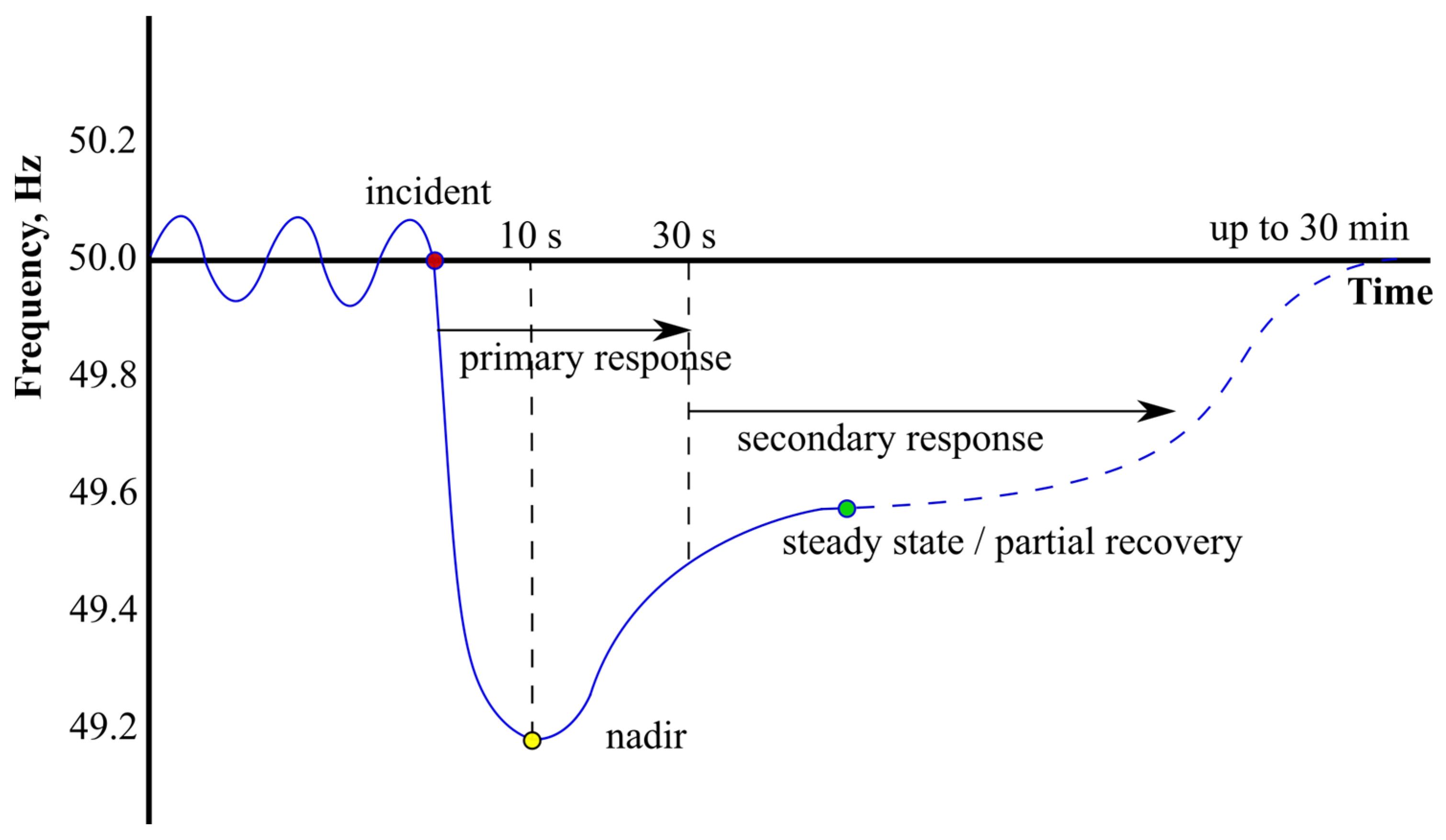
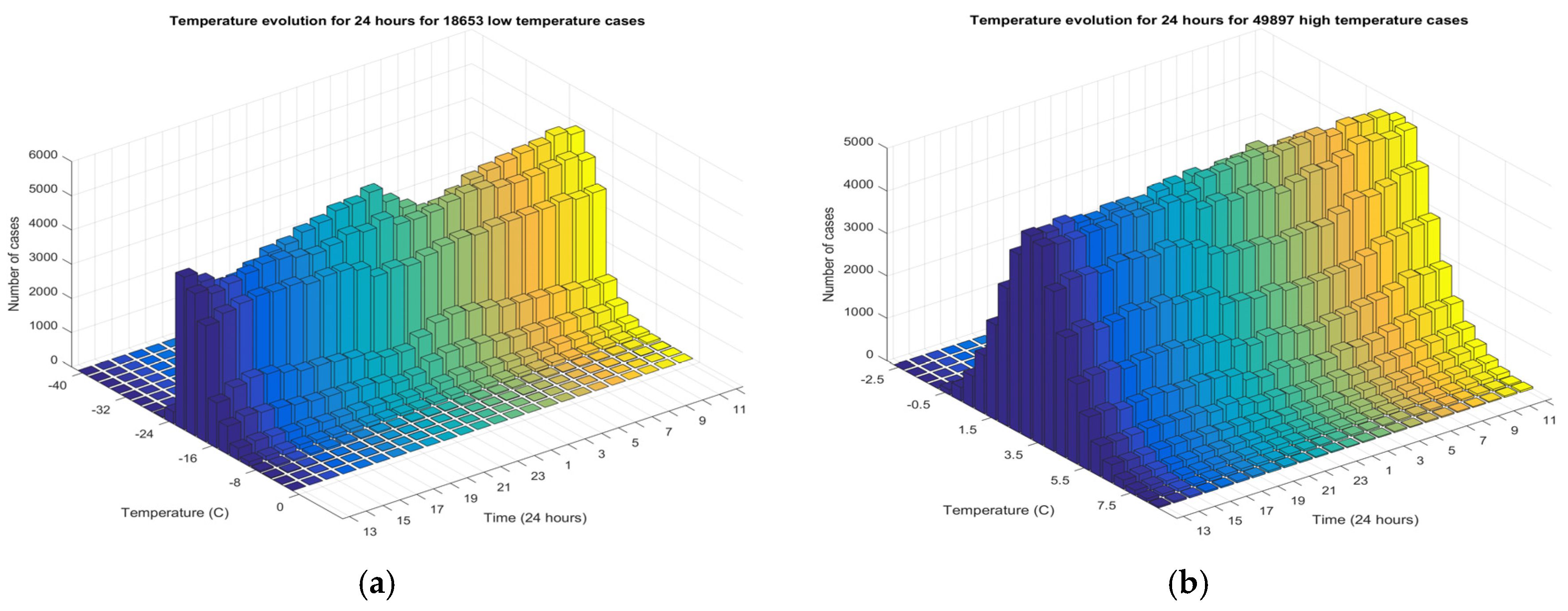
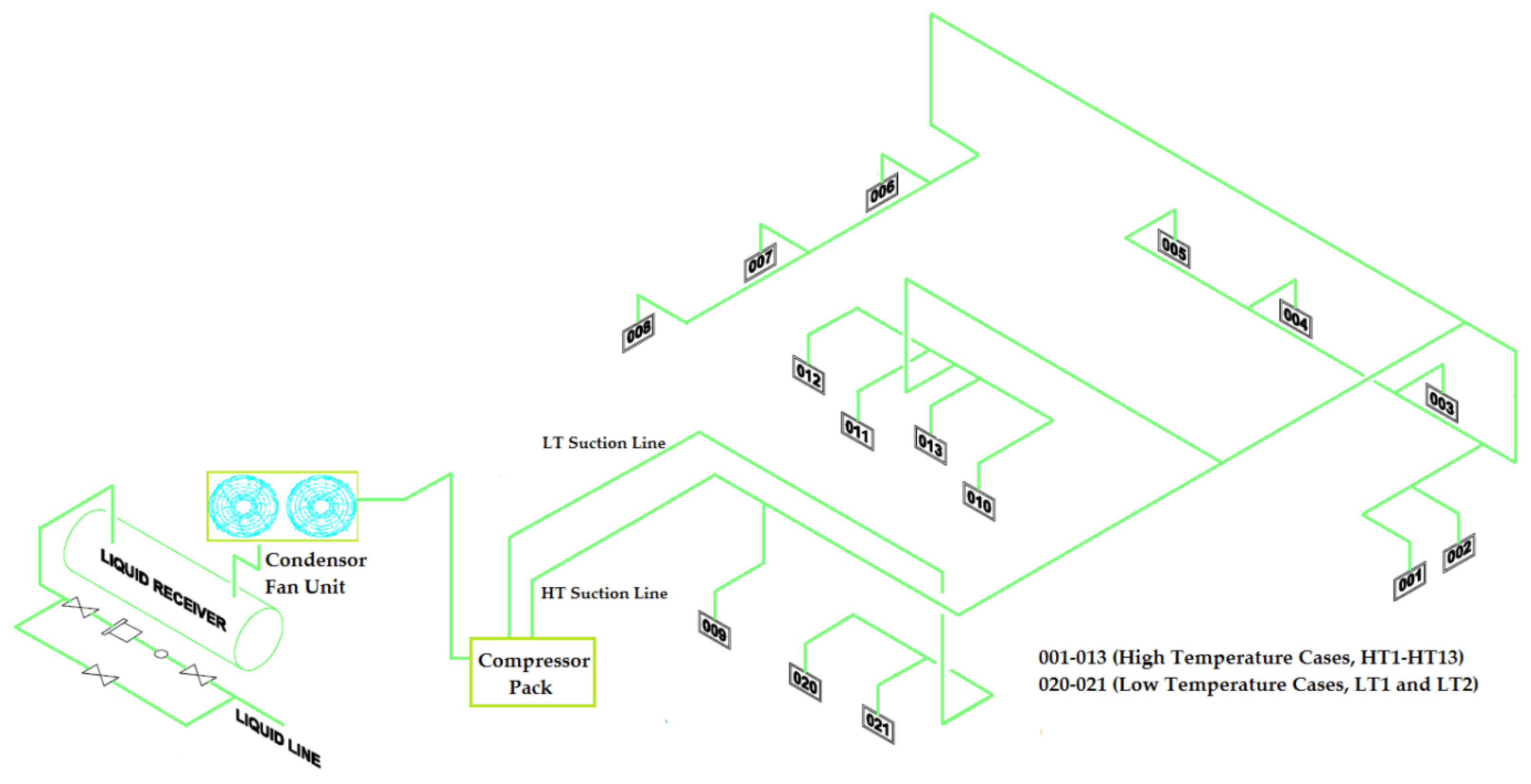
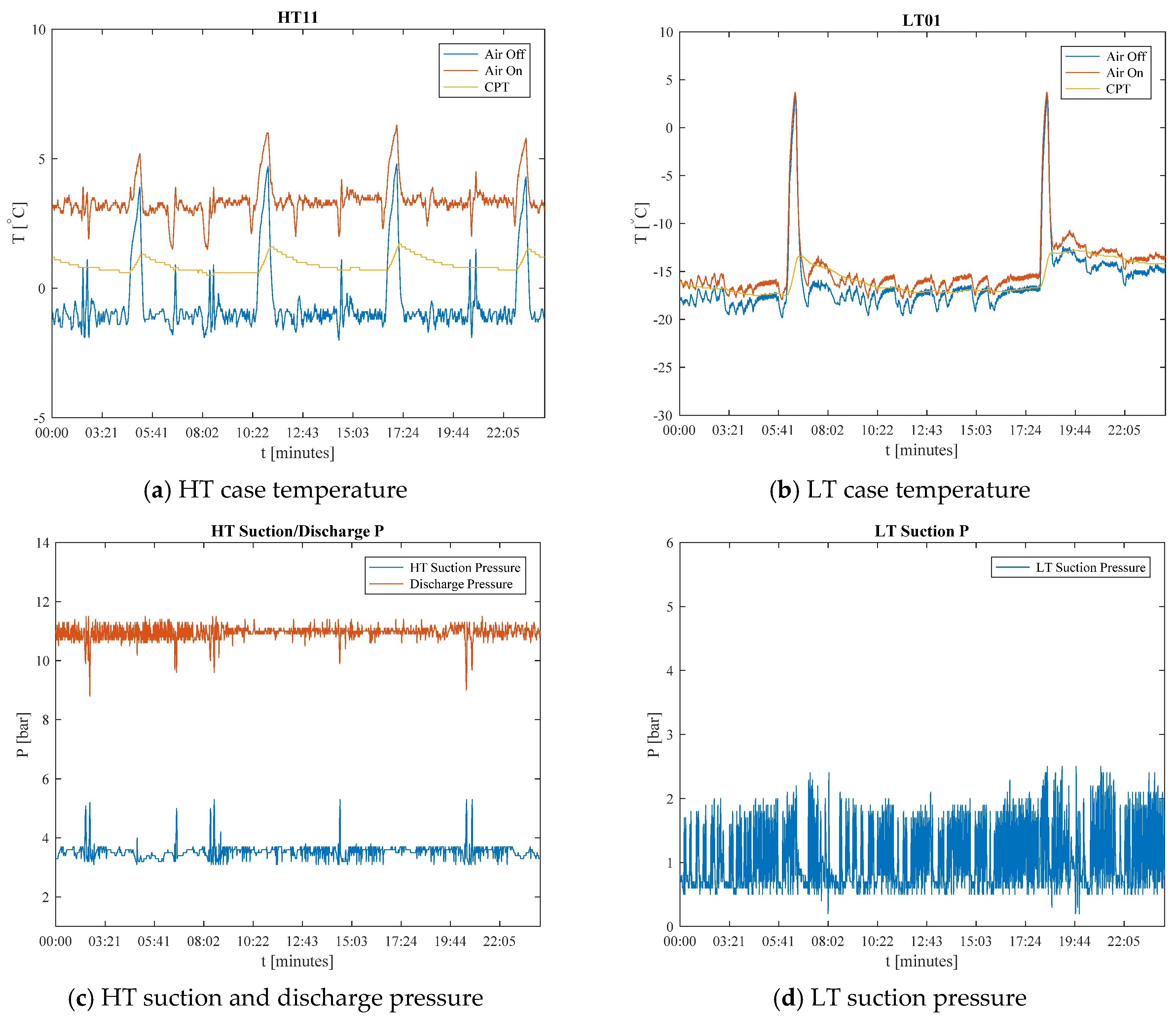
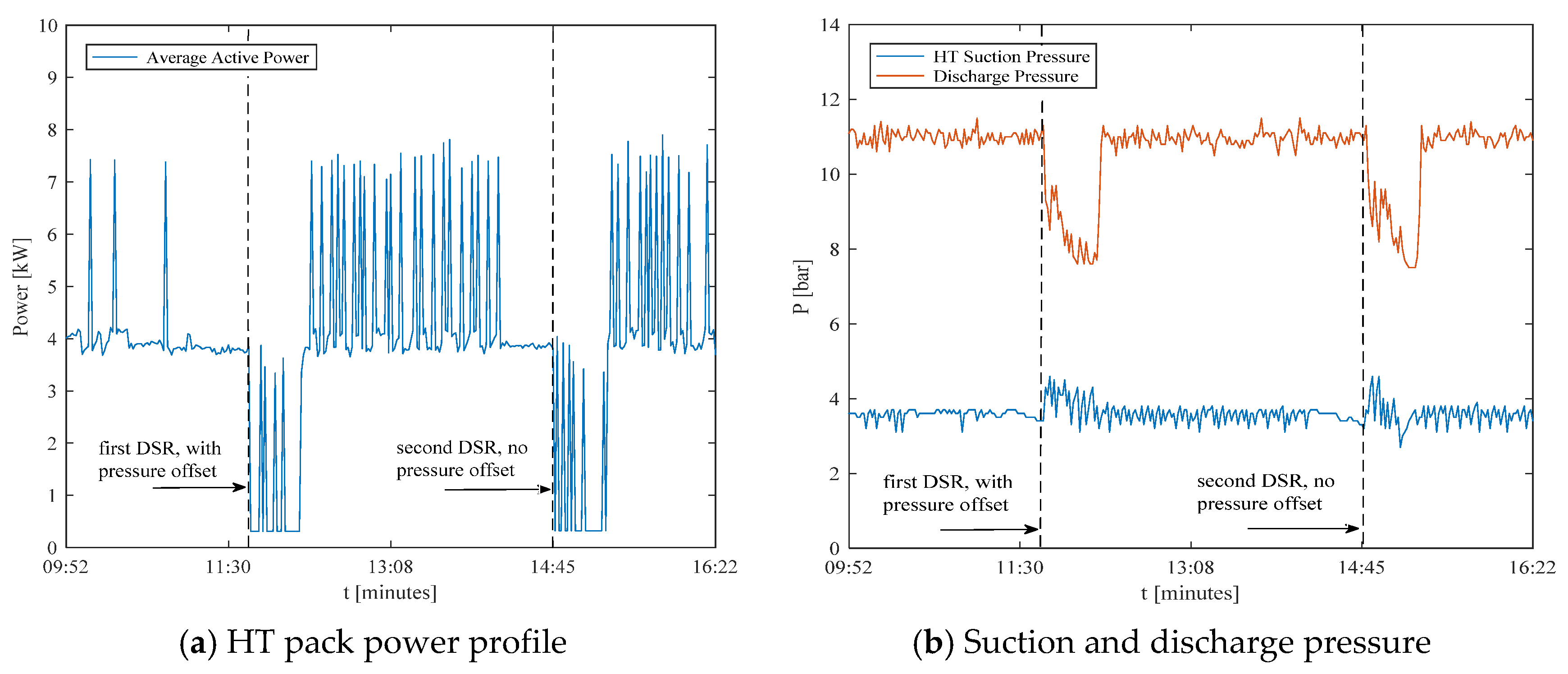
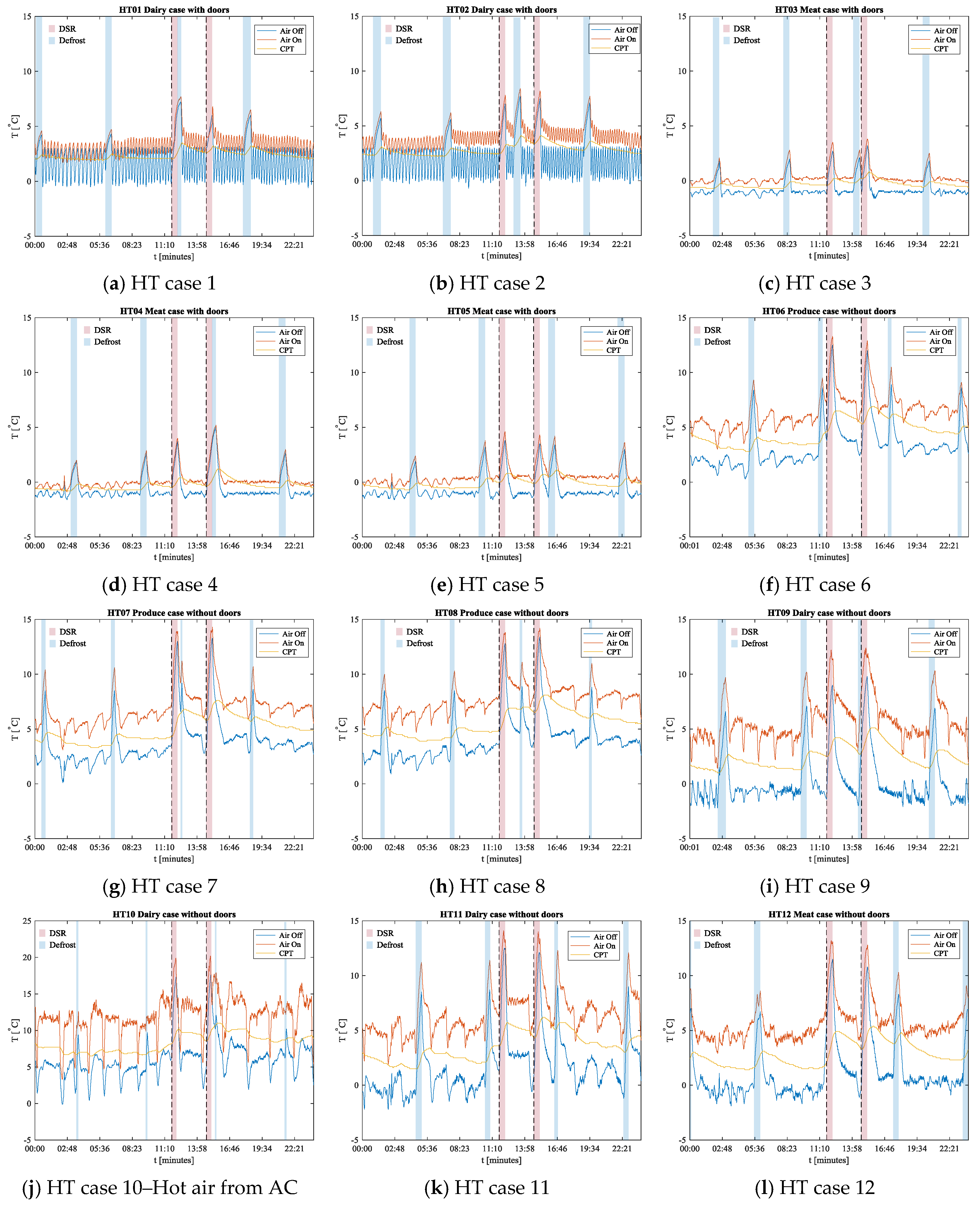
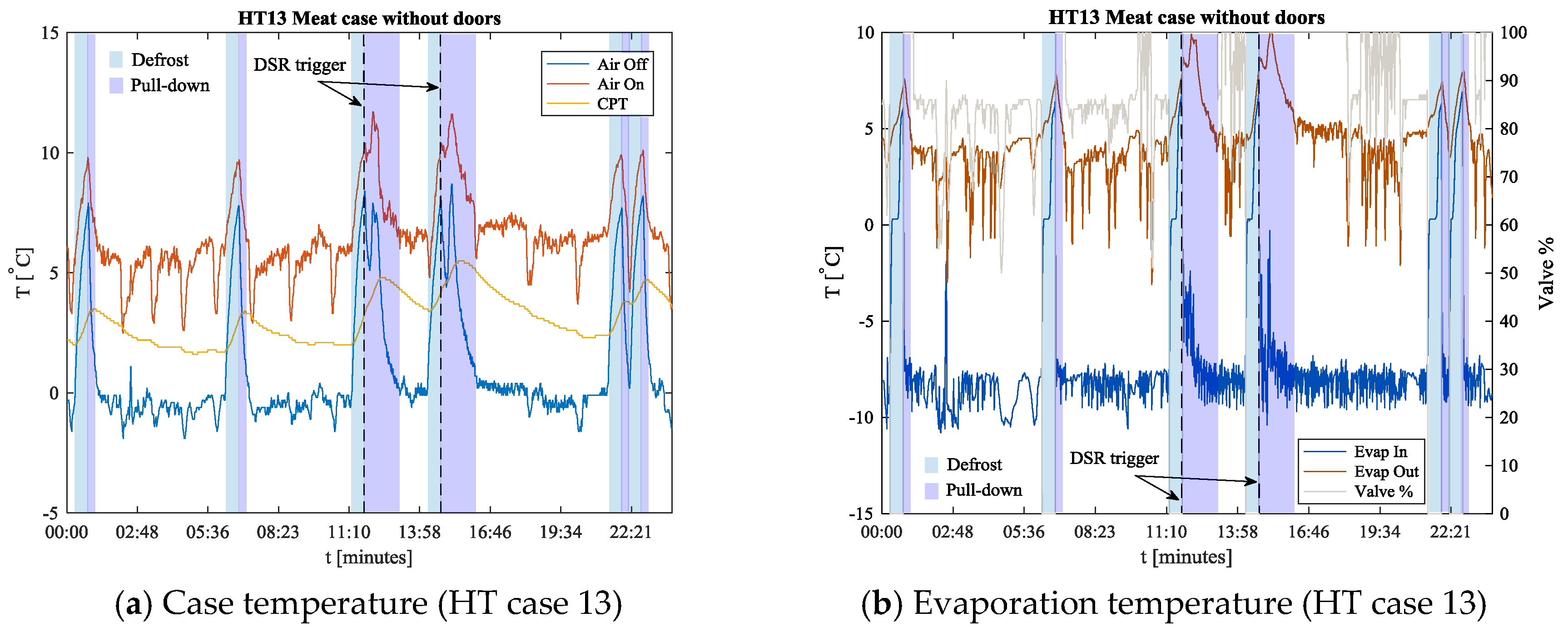
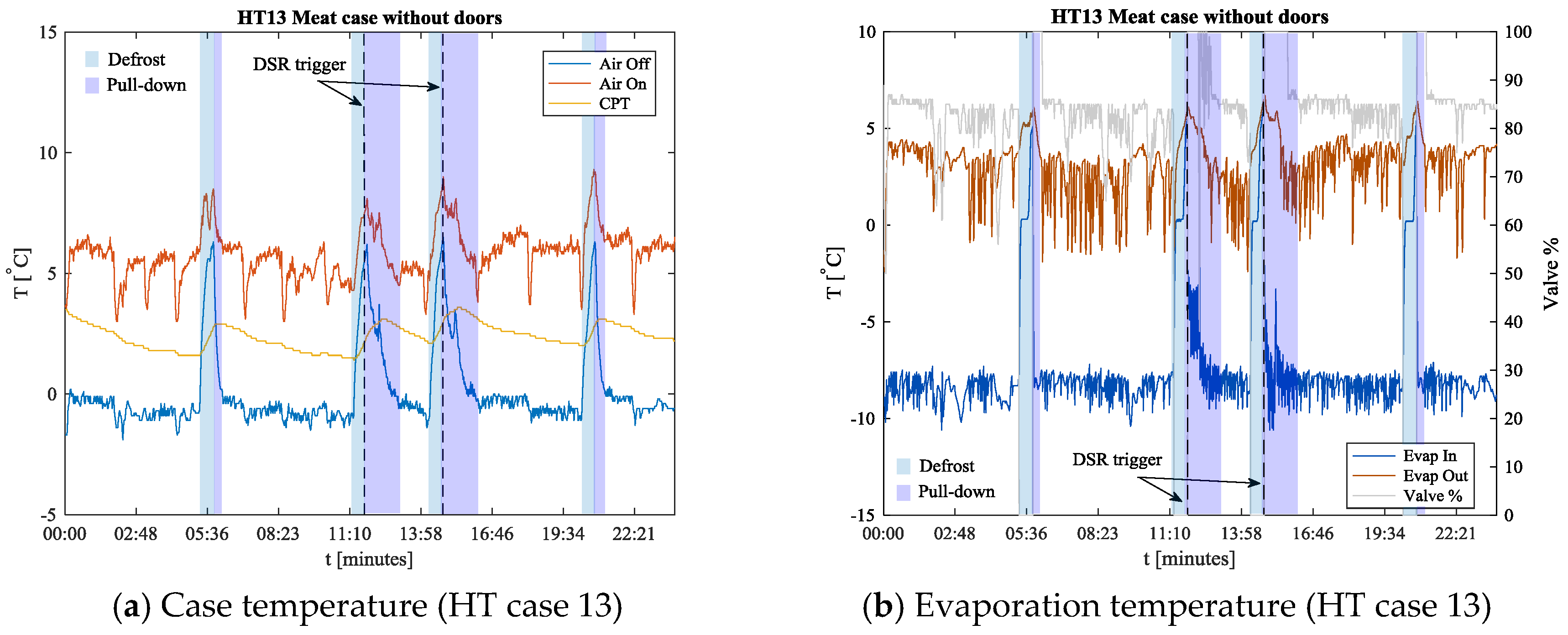
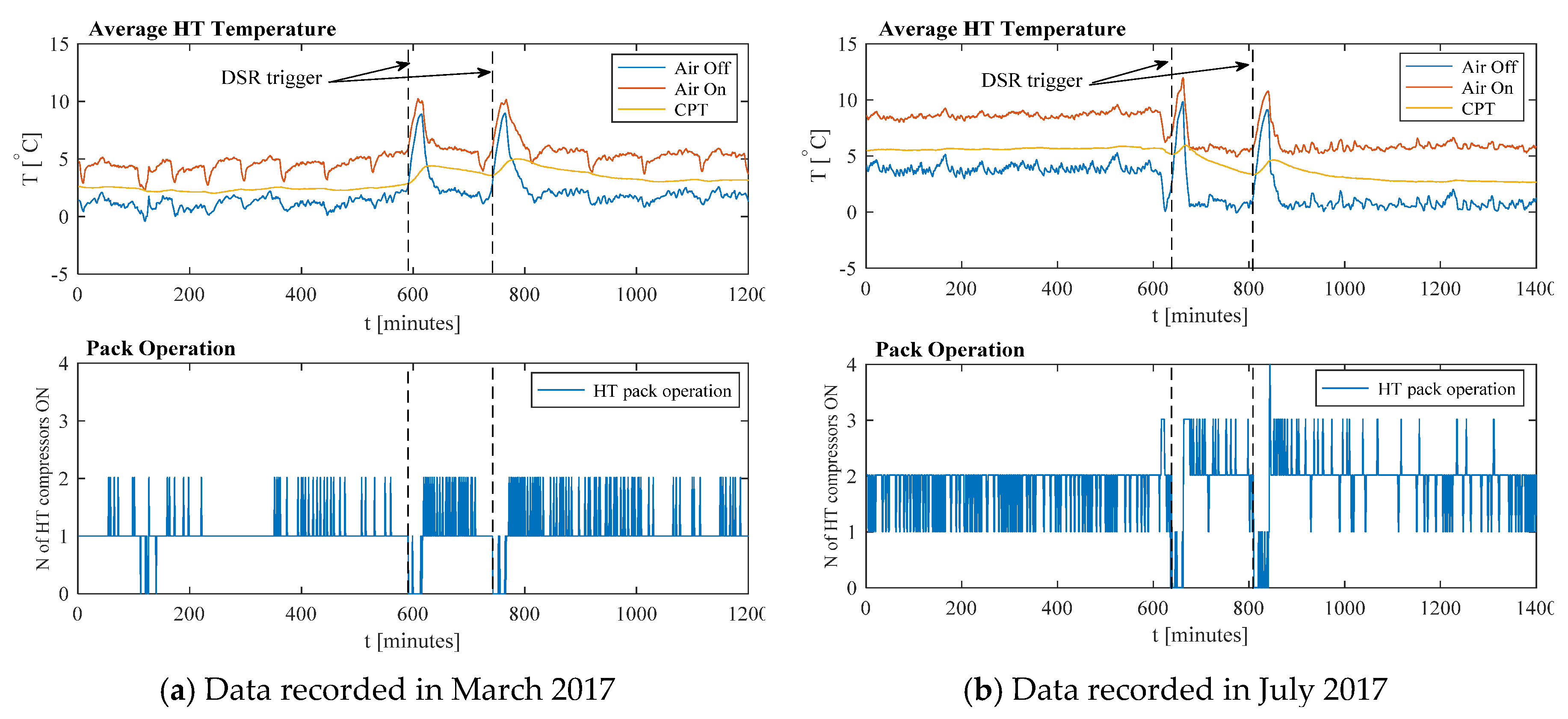
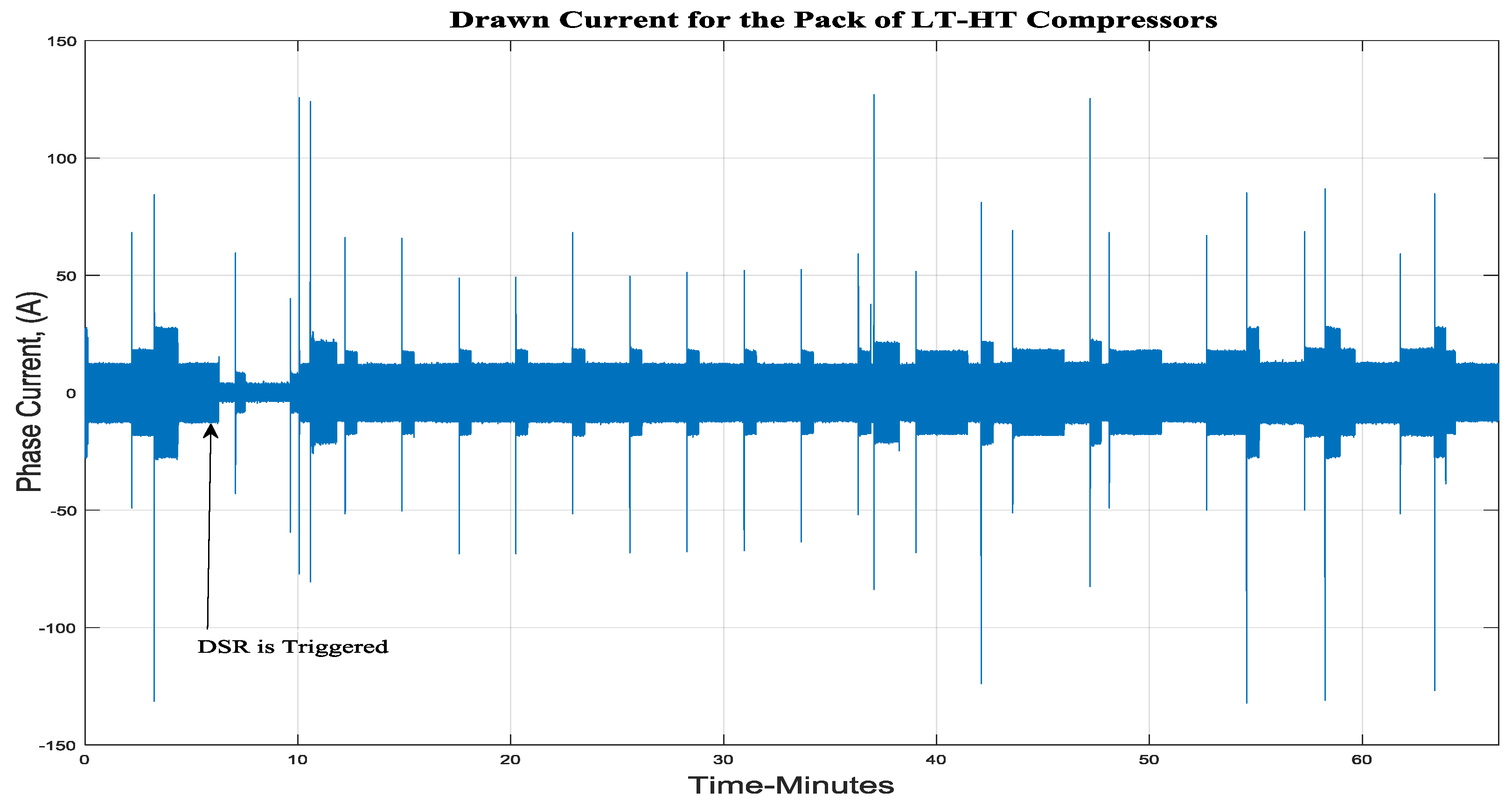
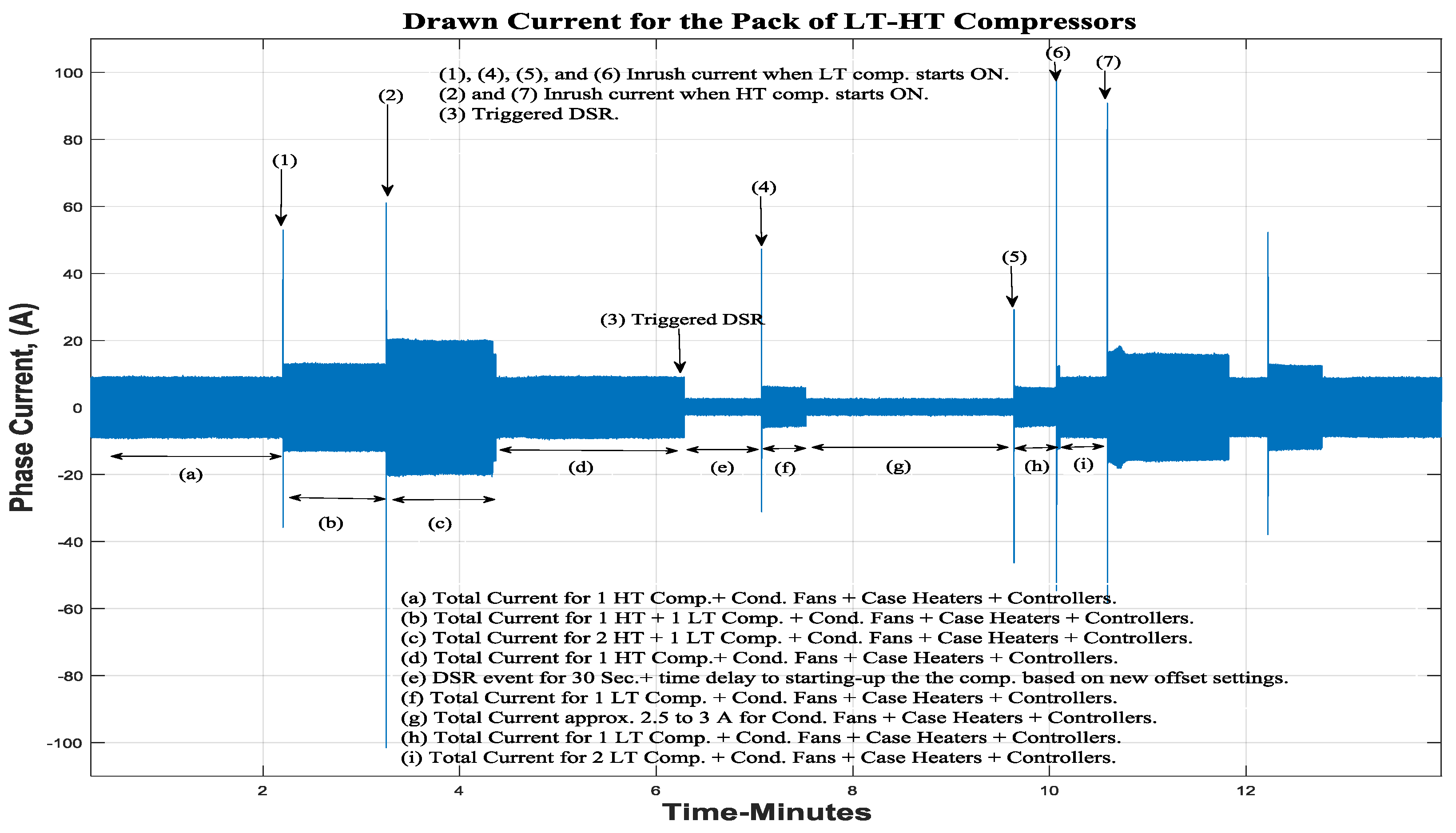
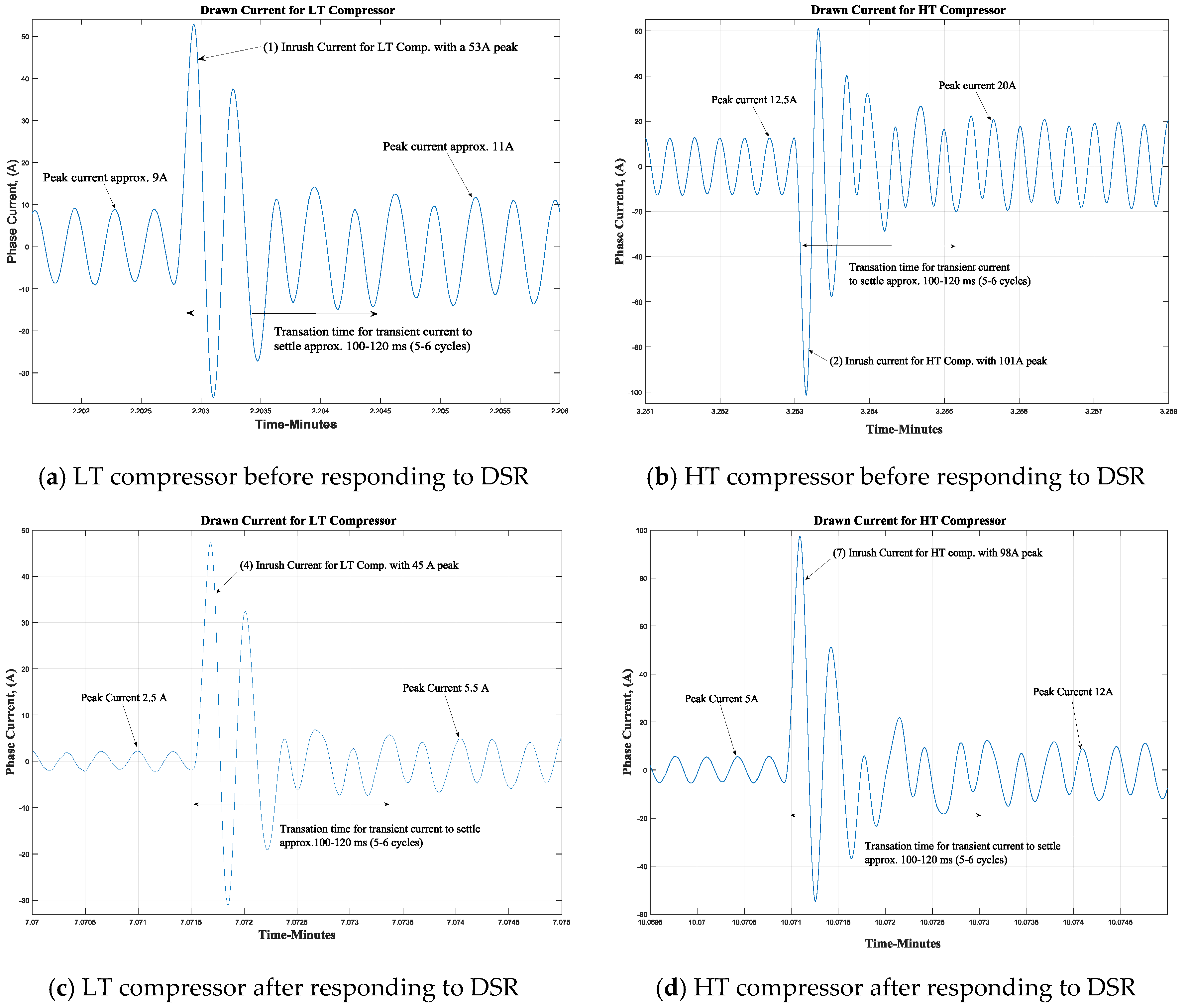


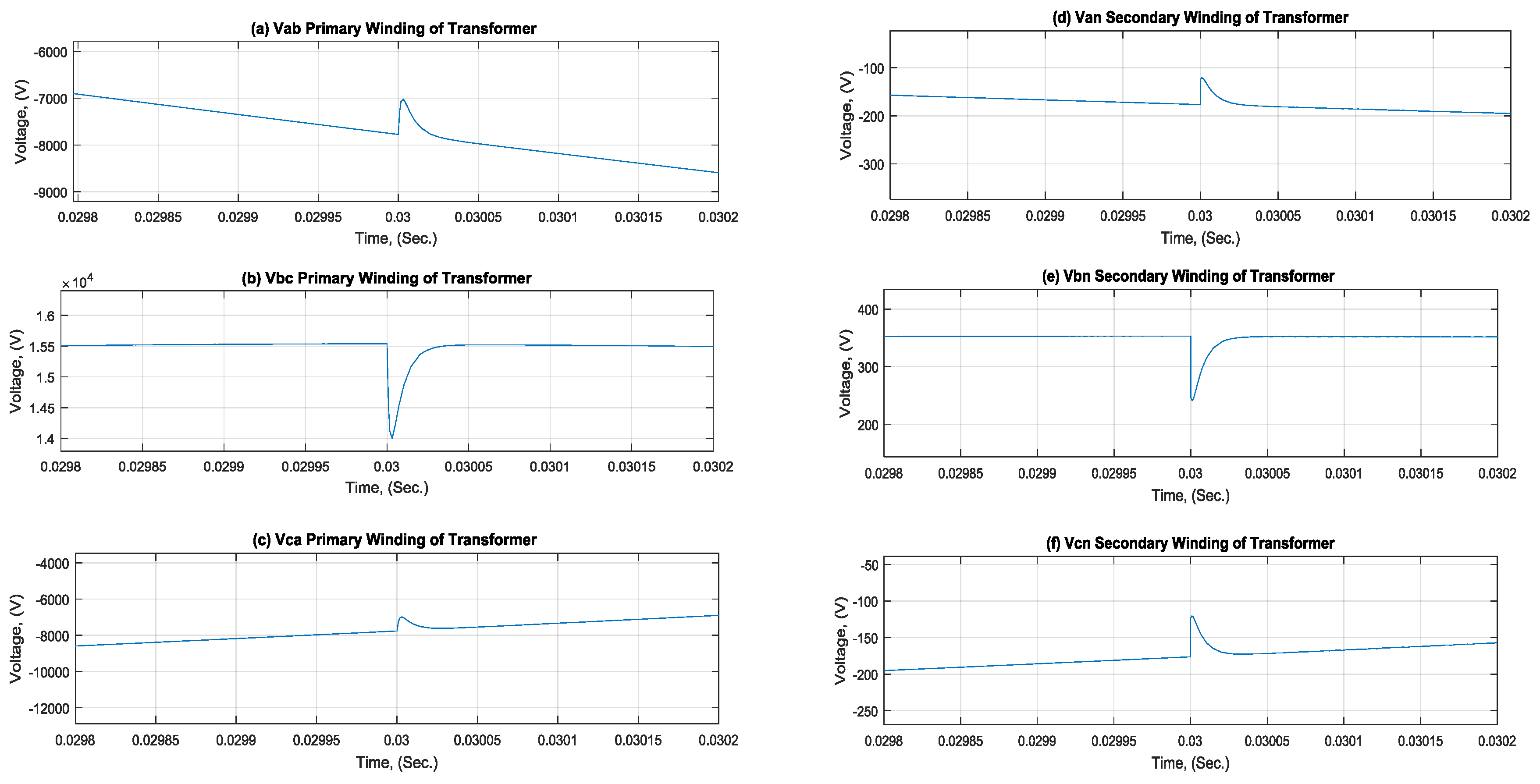
| Base Load (Load-1) | Inrush Load (Load-2) | ||||
|---|---|---|---|---|---|
| Phase Current (A) | 3Ø Power (kW) | 3Ø Reactive Power (kVAR) | Phase Current (A) | 3Ø Power (kW) | 3Ø Reactive Power (kVAR) |
| 12.5 | 7.97 | 4.94 | 101 | 64.4 | 39.9 |
© 2018 by the authors. Licensee MDPI, Basel, Switzerland. This article is an open access article distributed under the terms and conditions of the Creative Commons Attribution (CC BY) license (http://creativecommons.org/licenses/by/4.0/).
Share and Cite
Saleh, I.M.; Postnikov, A.; Arsene, C.; Zolotas, A.C.; Bingham, C.; Bickerton, R.; Pearson, S. Impact of Demand Side Response on a Commercial Retail Refrigeration System. Energies 2018, 11, 371. https://doi.org/10.3390/en11020371
Saleh IM, Postnikov A, Arsene C, Zolotas AC, Bingham C, Bickerton R, Pearson S. Impact of Demand Side Response on a Commercial Retail Refrigeration System. Energies. 2018; 11(2):371. https://doi.org/10.3390/en11020371
Chicago/Turabian StyleSaleh, Ibrahim M., Andrey Postnikov, Corneliu Arsene, Argyrios C. Zolotas, Chris Bingham, Ronald Bickerton, and Simon Pearson. 2018. "Impact of Demand Side Response on a Commercial Retail Refrigeration System" Energies 11, no. 2: 371. https://doi.org/10.3390/en11020371
APA StyleSaleh, I. M., Postnikov, A., Arsene, C., Zolotas, A. C., Bingham, C., Bickerton, R., & Pearson, S. (2018). Impact of Demand Side Response on a Commercial Retail Refrigeration System. Energies, 11(2), 371. https://doi.org/10.3390/en11020371






